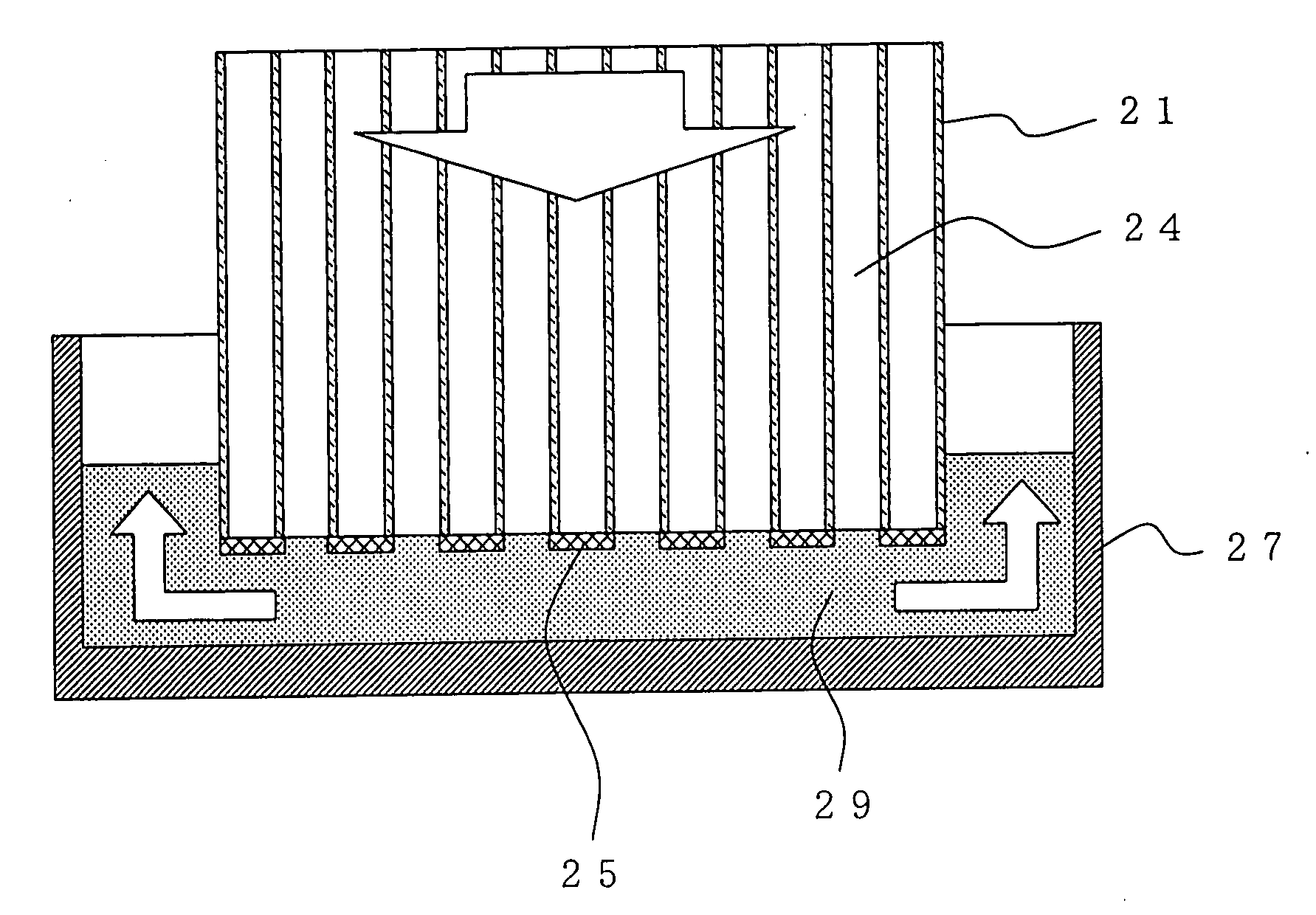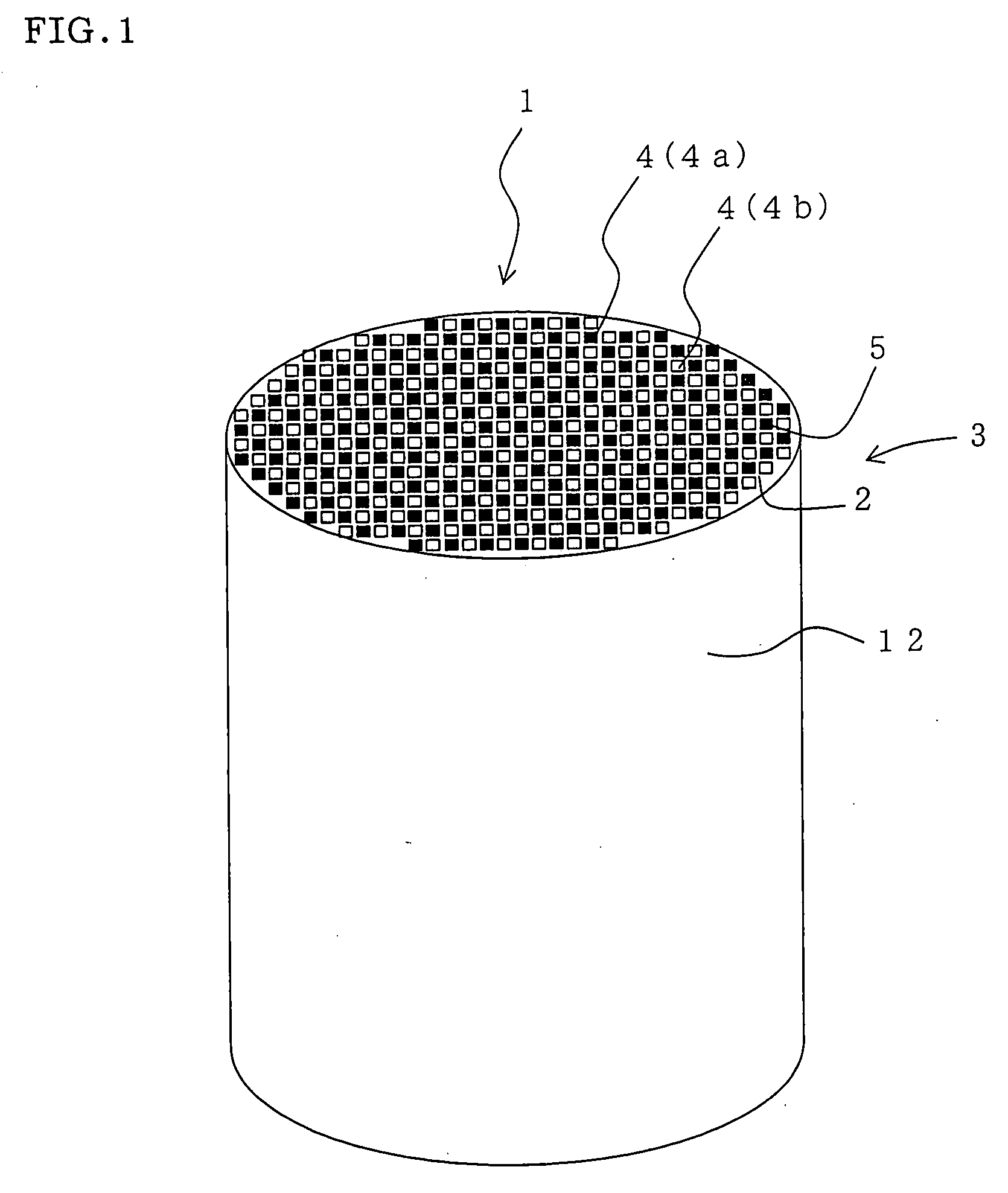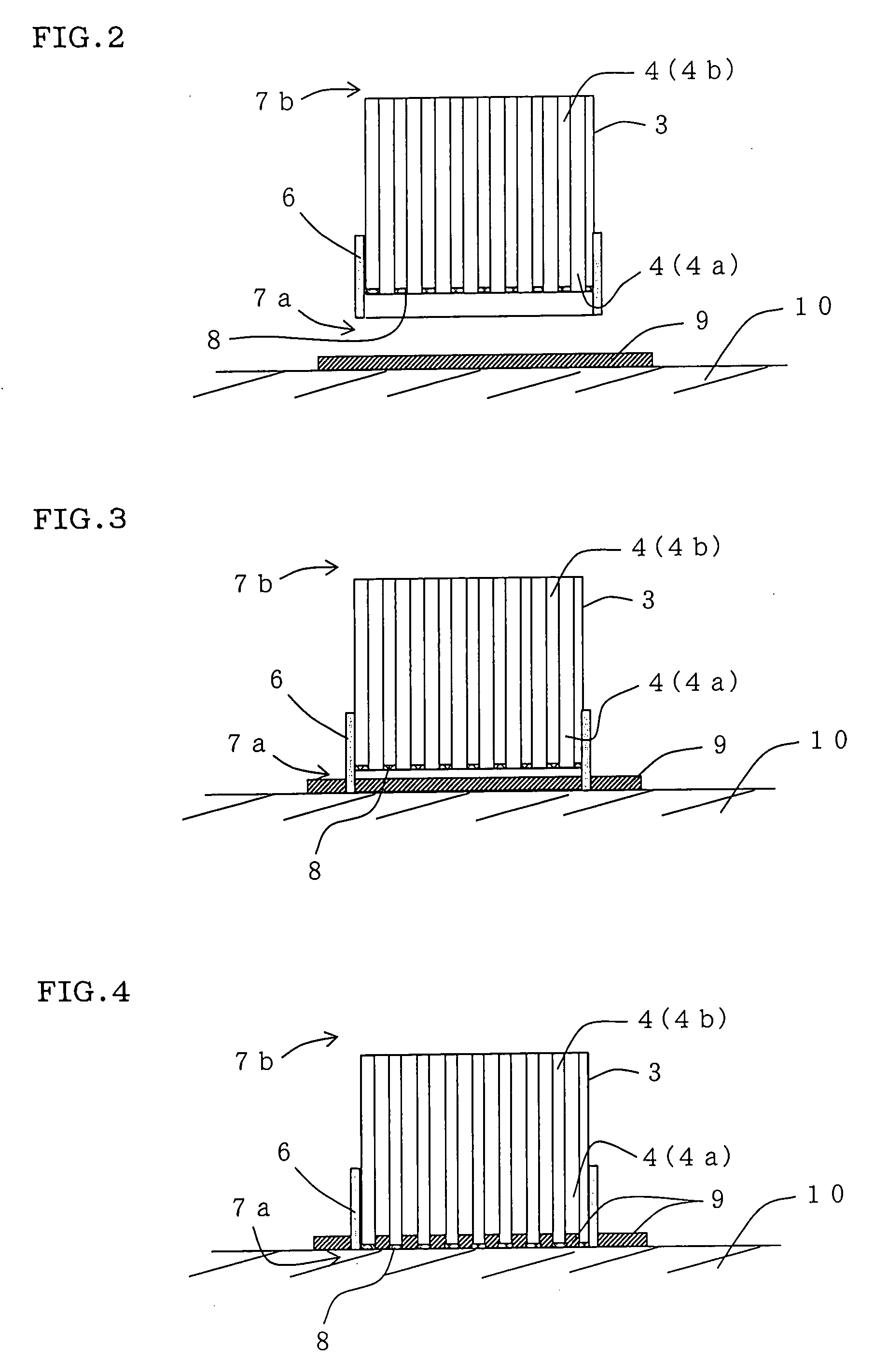Method for manufacturing plugged honeycomb structure and plug filling jig
a technology of honeycomb and plug filling, which is applied in the direction of manufacturing tools, ceramic shaping apparatus, etc., can solve problems such as environmental pollution
- Summary
- Abstract
- Description
- Claims
- Application Information
AI Technical Summary
Benefits of technology
Problems solved by technology
Method used
Image
Examples
example 1
[0105]In this example, a cylindrical honeycomb structure including partition walls formed of a porous body where a large number of cells acting as fluid passageways were divided and formed by the partition walls was provided as a honeycomb structure to be used. The honeycomb structure was comprised cordierite and had a shape of a cylinder whose end surface was a circle 250 mm across, a rectangular cell shape, a partition wall thickness of 0.3 mm (12 mil), and a cell density of 46.5 cells / cm2 (300 cells / square inch). On the diagonal line on the end surface of the honeycomb structure were 85 cells. 1 mil is equal to one thousandth of an inch and is approximately 0.025 mm.
[0106]The honeycomb structure was manufactured by adjusting a clay to an appropriate viscosity, performing extrusion molding on the clay by using a die having the above cell shape, partition wall thickness and cell density, drying the resulting green body, and cutting both end surfaces to provide smooth surfaces.
[0107...
example 2
[0111]In this example, a cylindrical honeycomb structure including partition walls formed of a porous body and a large number of cells acting as fluid passageways divided and formed by the partition walls was provided as a honeycomb structure to be used. The honeycomb structure was comprised cordierite and had a shape of a cylinder whose end surface was a circle 210 mm across, a rectangular cell shape, a partition wall thickness of 0.3 mm (12 mil), and a cell density of 46.5 cells / cm2 (300 cells / square inch). On the diagonal line on the end surface of the honeycomb structure were 70 cells.
[0112]The honeycomb structure was manufactured by adjusting a clay to an appropriate viscosity, performing extrusion molding on the clay by using a die having the above cell shape, partition wall thickness and cell density, drying the resulting green body, and cutting both end surfaces to provide smooth surfaces.
[0113]On such a honeycomb structure, a plug filling jig formed of a cylindrical body of...
example 3
[0115]On a honeycomb structure similar to that in Example 2, a plug filling jig formed of a cylindrical body of a natural rubber having a thickness of 8 mm was disposed. By using the same method as that in Example 2, a ceramic slurry was introduced into plugged cells. After the ceramic slurry was introduced into plugged cells, each plugging depth was measured for 70 cells on the diagonal line of the end surface. FIG. 16 is a graph showing each plugging depth in the 70 cells on the diagonal line of the end surface. In FIG. 16, vertical axis shows a plugging depth (mm) while horizontal axis shows the positions of the 70 cells on the diagonal line of the end surface. Table 2 shows the plugging depth (mm) in the 10 cells at the side of the periphery (cell positions 1 to 10 and 61 to 70 in FIG. 16).
PUM
| Property | Measurement | Unit |
|---|---|---|
| thick | aaaaa | aaaaa |
| thick | aaaaa | aaaaa |
| viscosity | aaaaa | aaaaa |
Abstract
Description
Claims
Application Information
 Login to View More
Login to View More - R&D
- Intellectual Property
- Life Sciences
- Materials
- Tech Scout
- Unparalleled Data Quality
- Higher Quality Content
- 60% Fewer Hallucinations
Browse by: Latest US Patents, China's latest patents, Technical Efficacy Thesaurus, Application Domain, Technology Topic, Popular Technical Reports.
© 2025 PatSnap. All rights reserved.Legal|Privacy policy|Modern Slavery Act Transparency Statement|Sitemap|About US| Contact US: help@patsnap.com



